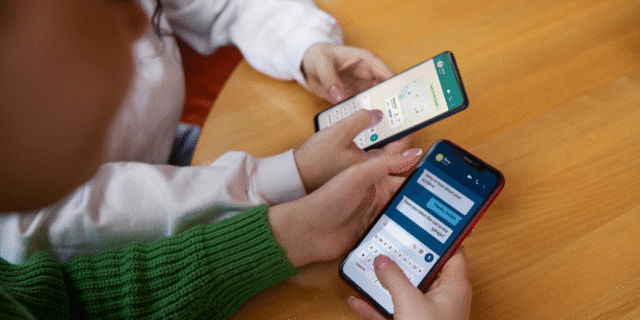WhatsApp chats have become central to both our work and personal lives. After winning our trust with its end-to-end encryption feature, the app has also become a storehouse of our personal photos and important documents. But we often forget that digital tools are also prone to spams and phishing attacks. Especially, with features like multi-device login and web access, it has become possible for hackers to sneak into a person’s WhatsApp chats without touching their phone.
In this WhatsApp security guide, you will learn about how to spot the signs, secure your chats and kick intruders out of your account. To begin with, let’s learn how to spot red flags.
Signs Someone Else Has Access to Your WhatsApp
Awareness is the first step towards cybersecurity. If you have any doubts, look out for the following signs:
- Messages are showing blue ticks but you haven’t opened the chat.
- If you spot a text that you didn’t send.
- Friends claim they have received odd messages or links from your account.
- Your profile picture or about info has changed without your knowledge.
- SMS verification codes from WhatsApp that you didn’t request.
These are classic signs that someone else might have logged into your account, most likely through WhatsApp Web or Desktop portal.
What to Do Next?
1. Check Linked Devices
Most of the times, unauthorised access happens via WhatsApp Web, where your chats can be mirrored on another device.
If you are an Android user,
- Open WhatsApp
- Tap the three dots (⋮)
- Check linked devices.
In the iPhone, linked devices are shown under the Settings menu in the WhatsApp app.
You’ll see all the devices currently linked to your account. If there is a location or browser that you don’t recognise, log it out immediately. You can even select log out from all devices, if you aren’t sure, and log in again.

2. Review Chats and Settings
Go through your most recent chats and check for sent messages or new chats that you didn’t create. Besides, look at your Last Seen — if messages show “read” while you were inactive, that’s suspicious.
Also, review the last seen settings in the privacy menu under the settings to ensure your visibility settings haven’t changed.
3. Sign out
If you still don’t feel safe and suspect someone’s inside your account, don’t panic but you must act fast. Log out of all devices from the ‘Linked Devices’ section. Re-login to WhatsApp with your phone number. It will automatically log out all other users from your account.
4. Enable Two-Step Verification
You should turn on two-step verification to keep your WhatsApp account safe. Tap on “Account” in the settings menu, then tap on “Two-Step Verification” and choose “Enable.” Now, set up a PIN and an email address to use for recovery. It adds much needed layer of extra security to your WhatsApp.
Apart from the WhatsApp Web and Linked Devices features, even your backup mail or IDs can also be used for fraudulent access to your WhatsApp. Thus, you should also change your Google/Apple account passwords and enable 2-Step Verification (2FA). You should also warn all your friends, famil and other contacts if spam or scam messages were sent from your number.
What If You’re Locked Out Of WhatsApp?
Often times, hackers are way ahead of us. Before you can get your account back, they may change your verification settings or PIN, and lock you out of your own account. In that case, immediately contact WhatsApp Support.
Go to Help and click on the Contact Us button or email the firm on support@whatsapp.com with your full phone number (including country code) and a description of the issue. WhatsApp will verify your details and would usually grant you access to your WhatsApp account.